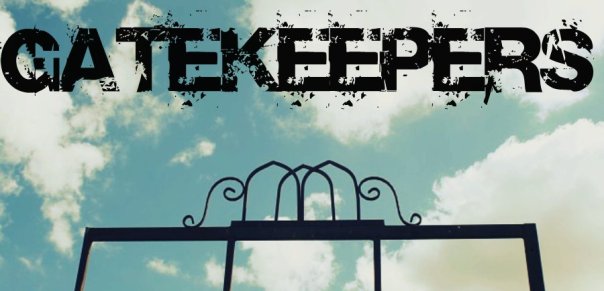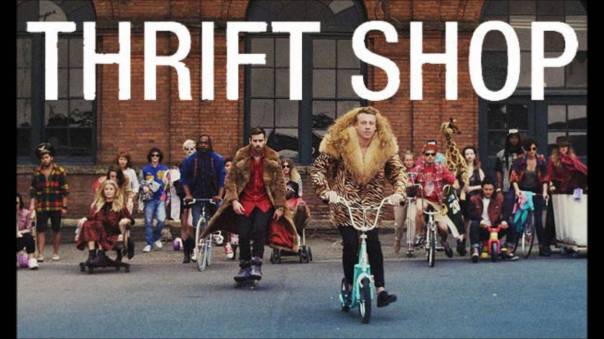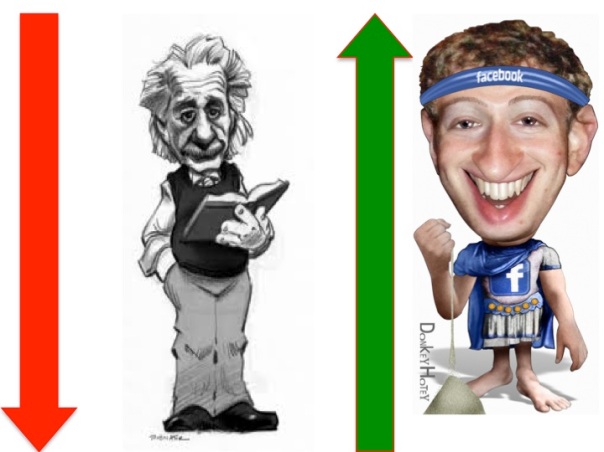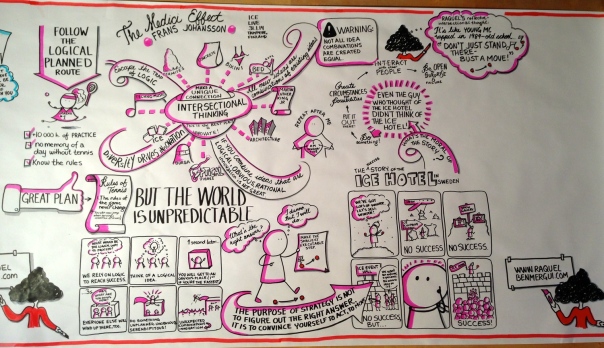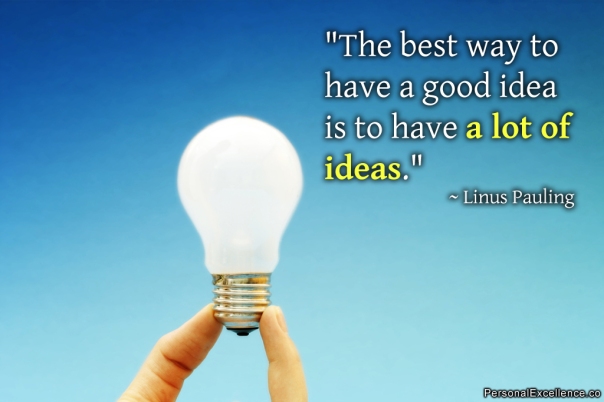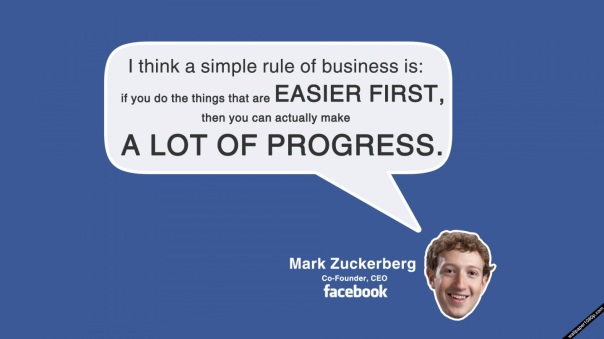According to the Systems Model of Creativity, for creativity to occur, enough “gatekeepers” of the appropriate domain need to anoint the resulting product as creative [1]. Traditional gatekeepers include teachers, critics, journal editors, museum curators, and grant committees among others, who are tasked with deciding what is an original and valuable contribution to a domain, and what is not. Until recently, without the approval and support of enough recognized experts on the subject, great ideas and works were condemned to wither away and be forgotten. However, technology is making gatekeepers less and less relevant to the innovation process, and there has never been a better time to be creative.
Even in the most democratic of countries, innovation remains substantially under the control of expert oligarchies that decide the scope and direction of a given domain. In the past, lucky innovators would live to see their works accepted by the gatekeepers, while the rest would die along with their ideas in obscurity. In physics, the opinion of a very small number of leading university professors was enough to certify Einstein’s ideas as creative and worth including in the field. Imagine if they had decided otherwise. Similarly, it has been said that in the US 10,000 people in Manhattan are the totality of gatekeepers in modern art [1]. In many domains, the expert process of assessing the creative worth of a product is arbitrary and often unreliable. In a few instances, works rejected by the gatekeepers of one era, were embraced by the gatekeepers of another era [2], as was the case of Monet, Van Gogh, and Cezanne. More recently, many publishers rejected Harry Potter, saying it was too long a book for children [3]. Although gatekeepers have the most influence on determining the status of potential Big-C eminent creative works [4], they exert their influence on all forms of creativity. Well-meaning teachers in the classroom, bosses on the job, and even relatives at home, feel tasked with making a judgment on the value of original works. Fortunately, in a number of domains, gatekeepers increasingly lack the power to restrict access to creative resources, or condemn good works to obscurity. Technology is making it increasingly easy for creative individuals to bypass the gatekeepers, and access the resources they need to act on their creative impulses, and make their works available to anyone who may benefit from them. Technology is democratizing the tools of creativity and innovation.
This democratization process is most evident in the publication of books and music. According to a recent study, 1300 authors who made their Kindle debut in 2013 are earning $10,000+ a year from writing [5]. More importantly, of the 140 authors that earned $100,000 or more from selling ebooks on Amazon last year, 100 are self-published, with just under 20 published by the Big Five publishers in the US. A similar transformation can be recognized in music. In a recent interview [6] Thrift Shop’s Macklemore was asked about not having a label publish his music and he said “Yeah, there’s no reason to do it. With the power of the Internet and with the real personal relationship that you can have via social media with your fans… I mean everyone talks about MTV and the music industry, and how MTV doesn’t play videos any more — YouTube has obviously completely replaced that. It doesn’t matter that MTV doesn’t play videos. It matters that we have YouTube and that has been our greatest resource in terms of connecting, having our identity, creating a brand, showing the world who we are via YouTube. That has been our label.”
Beyond the social media platforms such as YouTube that allow creatives to reach potential consumers directly, technology is also enabling crowdfunding platforms such as Kickstater [7, 8] to help them bypass the traditional gatekeepers, and access financial resources to fund their projects. Most notably, when Kickstarter started out it decided to stay away from the term ‘art’ and spelled out its mission statement as a new way to support any kind of ‘creativity’. Creativity has its own gatekeepers, and historically they have had a bias towards Art [9]. In the mind of many, creative is the opposite of practical. Kickstarter let the public decide what was important, and increasingly dollars are veering away from art towards invention. Importantly, crowdfunding is doing two things that other forms of funding struggle with, and changing our culture in the process. Firstly, it is fostering the new ‘maker’ culture with projects like Makey Makey [10, 11]. Secondly, it is a crucial method for routing around non-existent state funding or market influence that is stacked against public good in either the digital or physical realm [12].
The emerging culture of creative entrepreneurship predates the Web, and its roots go back to the 1960s. However, over the last decade technology has obliterated many of the traditional barriers. The Internet enables you to promote, sell, and deliver directly to the user, and to do so in ways that allow you to compete with corporations and institutions, which previously had a virtual monopoly on marketing and distribution [13]. You can now reach potential customers at a speed and on a scale that would have been unthinkable previously, when pretty much the only means were word of mouth, the alternative press, and stapling handbills to telephone poles. Creative entrepreneurship is spawning its own institutional structure: online marketplaces, self-publishing platforms, nonprofit incubators, and collaborative spaces. So, what will all this mean for creatives, and for the domains they seek to innovate?
For one, young designers are no longer interested in putting in their 10,000 hours to become masters of their craft. They recognize that 10,000 hours is less important now than 10,000 contacts. A new generation of creators is increasingly focused on acquiring only the knowledge they need to innovate, and favor breath over depth. It is the networks enabled by technology that mediate access to the creative resources needed to make a vision a reality, and to reach consumers that can appreciate the outcome. Traditional gatekeepers are increasingly limited in the power they can derive from their deep mastery of existing rules. When the Modern Library asked its editorial board to select the 100 best novels of the 20th century, the top choice was Ulysses. In a companion poll of readers, it was Atlas Shrugged [13]. Increasingly, the future belongs to those creatives with both the desire and courage to try to redefine the rules. In this new world, everyone’s opinion, as expressed in Amazon reviews and suchlike, carries equal weigh. The result is the democratization of taste.
The democratization of taste appears to coincide with the democratization of creativity [13]. The makers have the means to sell, but everybody has the means to make [14]. Increasingly, everybody seems to fancy himself a writer, a musician, a visual artist, scientist, and/or inventor. Moreover, the democratization of taste ensures that no one has the right (or inclination) to tell us when our work is bad. Expert gatekeepers no longer mediate the relationship between produce and consumer. On the one hand, this means freedom to pursue our dreams, but on the other, we risk suffering from a universal case of grade inflation in which we’re all swapping A-minuses all the time, or, in the language of Facebook, “likes.” [13].
Alas there is no turning back, we have come to the age of the customer, and the costumer is always right. Traditional gatekeepers are dead, and individual consumers are the new gatekeepers of creativity. Long live the gatekeepers!
REFERENCES
[1] Csikszentmihalyi, M. (1999). “Creativity”. Edited extract from R. Sternberg (Ed) Handbook of Creativity. Cambridge University Press. Retrieved from http://www.sagepub.com/upm-data/11443_01_Henry_Ch01.pdf
[2] McNee, L. (2011, October 21). “10 Famous Artists Who Had to Deal with Rejection During Their Lifetime”. The Art and Fine Art Tips of Lori McNee. Retrieved from http://www.finearttips.com/2011/10/10-famous-artists-who-died-before-their-art-was-recognized/#.
[3] Wilborn, A. (2013, February 13). “5 Hilarious Reasons Publishers Rejected Classic Best-Sellers”. Cracked.com. Retrieved from http://www.cracked.com/article_20285_5-hilarious-reasons-publishers-rejected-classic-best-sellers.html
[4] Kaufman, J.C. and Beghetto, R, A. (2009). “Beyond Big and Little: The Four C Model of Creativity”. Review of General Psychology, 13, 1-12. Retrieved from https://s3.amazonaws.com/jck_articles/Kaufman,+Beghetto+-+2009+-+Beyond+big+and+little+The+four+c+model+of+creativity.pdf
[5] Publishing Technology. (2014, July 15). “How many self-published authors are really cashing in? Analysis of Author Earnings data”. Content Forwards. Retrieved from http://www.publishingtechnology.com/2014/07/how-many-self-published-authors-are-really-cashing-in-analysis-of-author-earnings-data/
[6] Masnick, M. (2013, April 4). “Macklemore Explains Why Not Being On a A Label Helped Him Succeed”. Techdirt.com Case Studies. Retrieved from https://www.techdirt.com/blog/casestudies/articles/20130401/03115322523/macklemore-explains-why-not-being-label-helped-him-succeed.shtml
[7] PBSoffbook. (2012, March 21). “The Impact of Kickstarter, Creative Commons & Creators Project”. PBS Digital Studios. Retrieved from https://www.youtube.com/watch?v=024vLBBJf4I
[8] Hussey, P. (2012, August 17). “How is crowdfunding changing culture?”. The Guardian. Retrieved from http://www.theguardian.com/culture-professionals-network/culture-professionals-blog/2012/aug/17/crowdfunding-changing-culture-kickstarter-projects
[9] Enayati, A. (2012, March 28). “Is there a bias against creativity?” CNN. Retrieved from http://www.cnn.com/2012/03/28/health/enayati-uncertainty/
[10] Silver, J. (2012, May 12). “MaKey MaKey – An Invention Kit for Everyone?” Retrieved from https://www.youtube.com/watch?v=rfQqh7iCcOU
[11] Silver, J. (2012, November 9). “MaKey MaKey – An Invention Kit for Everyone?” Retrieved from https://www.kickstarter.com/projects/joylabs/makey-makey-an-invention-kit-for-everyone
[12] Howell, E. (2015, January 27). “NASA Mars Plan Criticized in Kickstarter Project, ‘Fight for Space’.” Space.com. Retrieved from http://www.space.com/28381-fight-for-space-movie-kickstarter.html
[13] Deresiewicz, W. (2015). “The Death of the Artist – and the Birth of the Creative Entrepreneur”. The Atlantic January/February. Retrieved from http://www.theatlantic.com/magazine/archive/2015/01/the-death-of-the-artist-and-the-birth-of-the-creative-entrepreneur/383497/
[14] Britton, L. (2014, August 18). “Democratized tools of production: New technologies spurring the maker movement”. Technology & Social Change Group. University of Washington Information School. Retrieved from http://tascha.uw.edu/2014/08/democratized-tools-of-production-new-technologies-spurring-the-maker-movement/
IMAGES
http://howleadersmanage.com/2013/05/27/getting-past-the-gatekeeper/
http://icreate-project.eu/index.php?t=186
http://www.huffingtonpost.com/2013/03/13/macklemores-thrift-shop-celebrities_n_2866378.html
http://pandawhale.com/post/25032/genius-and-insanity-do-you-need-to-be-crazy-to-be-the-best
http://long-live-scar.tumblr.com/page/6
http://thewickedacademic.blogspot.com/2014/09/re-defining-f-word-grade-inflation-in.html
